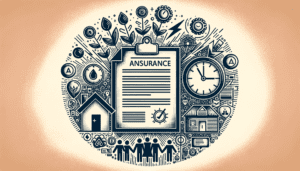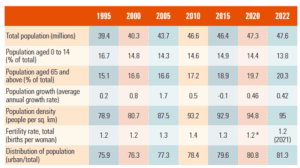What is renewable term life insurance

Are you considering term life insurance? If so, you’re on your way to taking an important step that could help provide essential financial benefits to your loved ones.
But what kind of term life insurance policy should you choose? You might be wondering if an annual renewable term life insurance policy is right for you — and you might also be wondering how renewable term life insurance compares to other types of life insurance policies, including permanent life insurance and universal life insurance.
Haven Life offers level term life insurance policies with term lengths of 10, 15, 20, 25 and 30 years. This means that when you take out a Haven Life term policy, your premium rates remain constant for your entire term length — which means you pay the same affordable monthly premium payment from the day you take out the policy for your insurance product until the day its term expires.
Annual renewable term life insurance also offers level premium periods — but since you renew the policy annually, your premium rates could go up every year as you get older.
Here’s what you need to know about renewable term life insurance, including how to decide if annual renewable term life insurance is the best choice for you and your loved ones.
What is renewable term life insurance?
Renewable term life insurance is a type of term life insurance that is designed to be renewed on a regular basis. An annual renewable term life insurance policy, for example, can be renewed every year.
When you apply for renewable term life insurance, you pay level premiums for the length of your life insurance term. That means your monthly premium payments remain constant until it is time to renew your term insurance policy. If you elect to renew a renewable term insurance policy, your premium rates could increase with every renewal. This means that if you sign up for annual renewable term life insurance, your premium payments could go up every year.
Most term life insurance policies can be renewed at the end of your term length, whether your term policy lasts for a single year, 10 years, 20 years or even 30 years. That said, when you hear people discuss “renewable term life insurance,” they could be referring to short-term policies that are designed to be renewed over and over — not a 25-year life insurance policy that is designed to provide coverage for a quarter of a century.
How much does renewable term life insurance cost?
Like nearly all life insurance policies, your renewable term life insurance premium is dependent on a number of factors including your gender, your age and your health — not to mention the amount of insurance coverage you’re requesting.
The big difference between renewable term life insurance premium rates and other types of term life insurance premiums is that renewable term insurance premiums will very likely increase every time you renew your policy. If you have an annual renewable term life insurance policy, expect to start out with low monthly premium payments — and then expect those payments to go up, year after year, as you continue to renew your policy.
A 30-year term life insurance policy, on the other hand, offers the same level premiums month after month, year after year, until your 30-year life insurance term expires. Since your premium rate remains constant for the life of the policy, term life policyholders could end up saving a lot of money by choosing a 30-year term insurance policy with a 30-year level premium period instead of renewing an annual term life insurance policy for 30 consecutive years and watching your premiums increase with every renewal. For example, if you’re a 25-year-old woman in excellent health, a 30-year, $250,000 policy would cost just $15 per month — less than 50 cents a day. (And last we checked, peace of mind is pretty invaluable.)
What are the advantages of renewable term life insurance?
One of the biggest advantages of an annual renewable term insurance policy is the ability to carry life insurance coverage for exactly as long as you need it. Instead of committing in advance to a 15, 20, 25 or 30-year life insurance policy, you can take out a policy for a single year and renew your policy every year until you no longer need life insurance coverage.
Let’s say you and your partner have just made a down payment on your first home. A life insurance death benefit can help your partner continue to make payments on the home in a worst-case scenario — but does that mean you need to take out a 15-year life insurance policy to accompany your 15-year mortgage? Not necessarily. People who plan to pay down their mortgage as quickly as possible might consider a renewable term life insurance policy, especially if they have no other debts, no other dependents and no other reasons for needing life insurance coverage after their home is paid in full. If you pay off your mortgage in 5 years instead of 15, you’ve just saved yourself 10 years of life insurance premiums for coverage you ultimately may not need.
What are the disadvantages of renewable term life insurance?
Renewable term life insurance might seem like an affordable life insurance option when you are young and healthy — especially if you envision yourself taking out an annual renewable term life insurance policy for a short period of time and canceling the policy before the monthly premium payments get too expensive.
But what happens if your life plans change? Your insurance needs may change as well — and you might wish you’d signed up for a life insurance policy that offers a longer level premium period.
Let’s go back to that example of you and your partner buying your first home. Taking out a renewable term life insurance policy so you can have life insurance coverage as you pay off your mortgage is one option — but what if it takes longer to pay off your mortgage than you were anticipating? What if you and your partner decide to start a family, and you suddenly realize it will take at least 20 more years of life insurance coverage to help protect your children until they no longer need your financial support?
In that case, you may wish you’d taken out a 20-year term life insurance policy from the get-go. That way, you’d be able to benefit from 20 years of level premium payments, instead of signing up for an annual renewable policy in which your premiums increase year over year.
How does renewable term life insurance compare to other types of life insurance?
In most cases, term life insurance policies are less expensive than whole life insurance policies — which, as the name implies, are designed to cover you for your whole life. Why is whole life insurance more expensive? Not only does a whole life policy provide longer coverage, but permanent life insurance policies like whole life insurance or universal life insurance often come with a cash value component that builds over time and the policyholder can borrow against.
These extra benefits of permanent insurance may sound attractive, but they come at a cost — not only in monthly premium rates, but also in the risk that a policyholder could withdraw too much of the policy’s cash value, leaving less of a death benefit for beneficiaries and loved ones.
In many cases, a traditional term life insurance policy that offers a level premium period for the entirety of your coverage needs is the most cost-effective way of providing for the people you care for most, and offers a better alternative to a permanent policy.
Does Haven Life offer renewable term life insurance?
Haven Life does not currently offer annually renewable term life insurance. When you apply for affordable term life insurance through Haven Life, you have the opportunity to take out life insurance coverage in term lengths of 10, 15, 20, 25 or 30 years. This gives you not only the benefit of low premium payments throughout the length of your policy, but also the peace of mind that comes with knowing exactly what your monthly life insurance premium rate will be — not only right now, but also 10, 15, 20, 25 or even 30 years from now.
Want to know what kind of life insurance premium rates to expect? Use Haven Life’s free online quote tool to estimate your monthly premium rates — or take a look at the chart below to see what other Haven Life policyholders are paying for term life insurance.
Quotes for term life insurance
AgeGenderTerm LengthFace amountPremium35-year-oldFemale20 years$500,000$17.50/mo35-year-oldMale20 years$500,000$20.72/mo35-year-oldFemale20 years$1,000,000$29.03/mo35-year-oldMale20 years$1,000,000$34.08/mo45-year-oldFemale20 years$500,000$36.45/mo45-year-oldMale20 years$500,000$42.49/mo45-year-oldFemale20 years$1,000,000$66.57/mo45-year-oldMale20 years$1,000,000$80.00/mo Estimate based on pricing for eligible Haven Term applicants in excellent health. Pricing differences will vary based on ages, health status, coverage amount and term length. These prices do not reflect the rates for applicants in DE, FL, ND, NY and SD.
Who should consider renewable term life insurance?
If you only need life insurance coverage for a very short period of time, annual renewable term life insurance could be an affordable option. Be aware that many insurers, including Haven Life, don’t offer annual renewable term life policies — which means that if you are in the market for short-term life insurance coverage, you might want to consider a 10-year term life insurance policy instead.
Some people look for annual renewable term life insurance policies to provide coverage during a period of unemployment, assuming that they’ll switch back to an employer-sponsored life insurance plan once they find a new job. While that’s always an option, it’s worth noting that the group life insurance plans offered by many employers may not provide the sufficient coverage you need to cover funeral costs, pay off old debts and provide for your loved ones. Adding an affordable term life insurance policy as additional coverage is one way to give your beneficiaries a larger death benefit and the opportunity to maintain better financial stability in a worst-case scenario.
Before you consider renewable term life insurance, ask yourself whether the policy is likely to meet your insurance needs — and whether you’re going to be happy with your premium rates not only right now, but also after several renewals.





